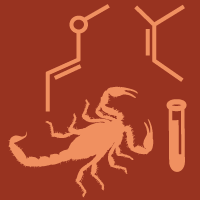Topic Menu
► Topic MenuTopic Editors




Fungi and Their Metabolites Affecting Quality, Safety and Functionality of Silage
Topic Information
Dear Colleagues,
Ensiling is an effective and widespread technique for long-term feed preservation with the characteristics of low cost and easy operation. At the early stage of ensiling, water-soluble carbohydrates (WSC) are broken down into water, carbon dioxide, and energy under the respiration of aerobic bacteria. When oxygen is depleted, lactic acid bacteria (LAB) attached to forage multiply and convert WSC into organic acids, thereby creating an acidic and anaerobic environment, inhibiting the activities of undesirable microbes, such as molds and yeasts, and reducing the risk of forage spoilage. Generally, molds and yeasts are usually considered undesirable and pathogenic eukaryotes during ensiling. With the lactic acid production and the decrease in pH level during fermentation, growth of spoilage microorganisms containing aerobic bacteria, yeasts, and filamentous fungi can be limited. However, even if anaerobic and acidic conditions are ensured, a low fungal population can survive in silage and may activate their metabolism if necessary. Various yeasts, such as Candida, Hansenula, Saccharomyces, and Torulopsis spp., can produce lactic acid, acetic acid, and ethanol under anaerobic conditions, although their presence in silage is considered undesirable. To the best of our knowledge, the fungal microbiota and their metabolites and functionality involved in ensilage, and whether bacterial and fungal microbiota interact during ensiling, has not been well investigated. To date, an increasing number of studies have reported how silage microbiota, determined by high-throughput amplicon sequencing, could differ between crops and by the use of additives, but many studies have focused solely on bacterial microbiota. Few studies have examined the fungal microbiota involved in ensiling. Information on the correlation between fungal populations and fermentation characteristics of silage is currently not enough. Therefore, it is critical to perform a qualitative and quantitative assessment of the fungi communities during ensiling and to evaluate some methods to improve the quality, hygiene and safety of silage.
We are pleased to invite you to submit papers that showcase and discuss fungi community and their metabolites in silages. The submitted papers should use Next Generation Sequencing, Metagenomics, and Metabolomics methods to characterize fungi community compositions, diversity, interaction, and their functionality and metabolites during ensiling or aerobic exposure. This Topic aims to provide a fruitful collection of papers (both research articles and review articles) based on different silage managements including chemical additives and inoculants, harvest pretreatments, and other techniques, to ensure the silage quality, safety and hygiene.
We look forward to receiving your contributions.
Dr. Siran Wang
Dr. Qing Zhang
Dr. Lin Sun
Dr. Huili Pang
Dr. Musen Wang
Topic Editors
Keywords
- fungi
- ensiling
- metabolism
- function
- silage
- yeast
- aerobic stability
Participating Journals
| Journal Name | Impact Factor | CiteScore | Launched Year | First Decision (median) | APC |
|---|---|---|---|---|---|

Agriculture
|
3.6 | 3.6 | 2011 | 17.7 Days | CHF 2600 |

Animals
|
3.0 | 4.2 | 2011 | 18.1 Days | CHF 2400 |

Fermentation
|
3.7 | 3.7 | 2015 | 14.3 Days | CHF 2600 |

Microorganisms
|
4.5 | 6.4 | 2013 | 15.1 Days | CHF 2700 |

Toxins
|
4.2 | 7.5 | 2009 | 18.4 Days | CHF 2700 |

MDPI Topics is cooperating with Preprints.org and has built a direct connection between MDPI journals and Preprints.org. Authors are encouraged to enjoy the benefits by posting a preprint at Preprints.org prior to publication:
- Immediately share your ideas ahead of publication and establish your research priority;
- Protect your idea from being stolen with this time-stamped preprint article;
- Enhance the exposure and impact of your research;
- Receive feedback from your peers in advance;
- Have it indexed in Web of Science (Preprint Citation Index), Google Scholar, Crossref, SHARE, PrePubMed, Scilit and Europe PMC.


